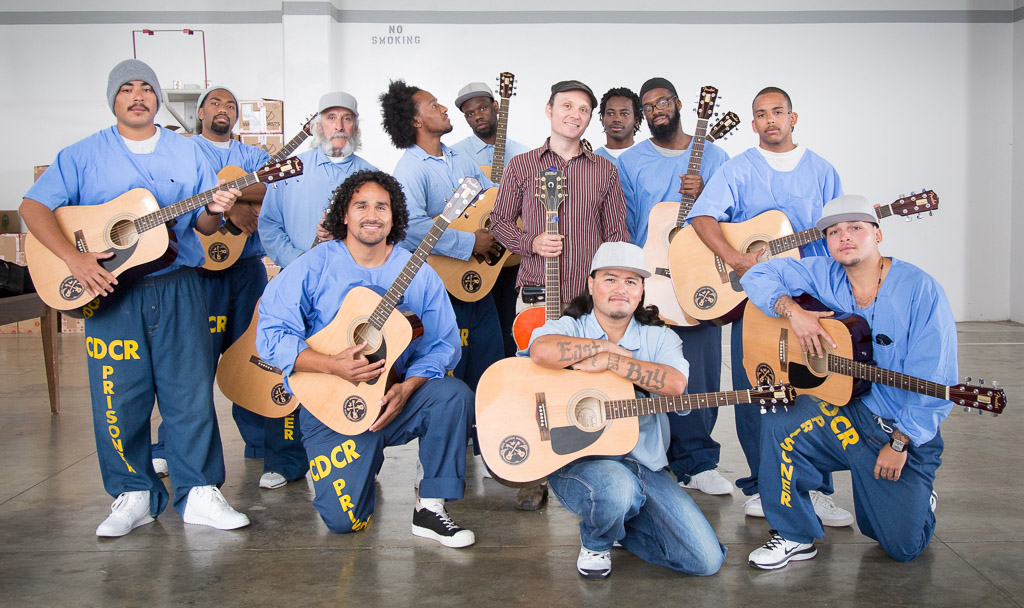Prison Arts Project
What is the Prison Arts Project?
The major program of the William James Association is the Prison Arts Project (PAP), created through the vision and efforts of Eloise Smith. A pilot project was set up in 1977 at the California Medical Facility at Vacaville, with funding provided by the San Francisco Foundation, the National Endowment for the Arts, the California Arts Council, and the Law Enforcement Assistance Administration.
Eloise Smith’s vision was based simply on the value of providing all individuals with the most meaningful art experience possible; in her words, “that mysterious life-enhancing process we call the arts, a realm in which patient application and vivid imagination so often produce magic.”
In the early 1980s, the success of this initial program led to the formation of Arts-in-Corrections, an administrative office within the California Department of Corrections. It included a state-employed Institution Artist Facilitator and contracts with community-based arts organizations (such as WJA) to support professional teaching artists. Institutional Artist Facilitators supplemented their own classes with artists to engage inmates in a variety of visual, literary and performing arts disciplines.
Professional artists from local communities have offered programs in visual arts such as drawing, painting, printmaking; in literary arts such as poetry, playwriting and memoir; and in the performing arts of music, theater, and dance. Unfortunately, in January 2003 (the same year that Rehabilitation was added to the name of California Department of Corrections), all Arts in Corrections artists’ contracts were terminated as the result of a budget crisis in California state government. A limited program remained with the Institutional Artist Facilitator at each prison, until that position was eliminated in 2010 budget cuts. Gratefully through funding from private sources, the William James Association continued to employ artists at San Quentin and maintain a living example of prison arts excellence.
Since 2013, WJA has been part of a team of California arts organizations that have revitalized AIC through a series of initiatives and pilot programs. As of 2017, each of California’s 35 prisons has fine arts programming serving incarcerated men and women. WJA’s Prison Arts Project sponsors arts programs that help prepare students for a successful return to their community through classes that reconnect them with their families, teach social and communication skills through theater and creative writing, and give participants opportunities to contribute to their community through the arts.
Philosophy
 Bringing the arts to institutionalized individuals is based in the belief that participation in the artistic process significantly affects a person’s self-esteem and general outlook on the world. Art workshops teach self-discipline, problem-solving, and concentration through absorption in a specific creative endeavor.
Bringing the arts to institutionalized individuals is based in the belief that participation in the artistic process significantly affects a person’s self-esteem and general outlook on the world. Art workshops teach self-discipline, problem-solving, and concentration through absorption in a specific creative endeavor.
The skills acquired through participation in the arts are translated to other aspects of one’s life. Art satisfies an individual’s need for creativity, self-expression, recognition, and self-respect. Because it is an individual expression of universal human experience, art serves as a bridge between diverse groups.
Further, we believe that study of the arts can and should be an integral part of the rehabilitative process, that it has an inherent ability to nurture the qualities that make an individual a useful and valued member of their community. It offers a language of empowerment, that they may use in their own efforts to rehabilitate. Empathy, agency and imagination are achieved in art programs that step outside the racial segregation, violence, and oppression of prison.
Taught by professional artists in hands-on visual, performing and literary art workshops, the by-products of PAP, and other successful Arts in Corrections programs, are proven to decrease institutional tensions, lower recidivism rates and enrich the incarcerated individual’s environment.
“There are general feelings of hostility and hopelessness in prisons today and it is getting worse with overcrowding. . . Art workshops and similar programs help take us out of this atmosphere and we become like any other free person expressing our talents. Being in prison is the final ride downhill unless one can resist the things around him and learn to function in a society which he no longer has any contact with. Arts programs for many of us may be the final salvation of our minds from prison insanity. It’s contact with the best of the human race. It is something that says that we, too, are still valuable.”- Prison Arts Project Student

The prison system punishes negative behaviors but offers little to replace them. The capacity for personal change is great, although daunting within a repressive environment and culture of extreme power imbalance, racism, segregation and manipulation. The Prison Arts Project creates a sanctuary where people experiencing incarceration are treated with respect, courtesy and an openness to their unique expressions as creative human beings.
Research
Please visit our updated Research page.


